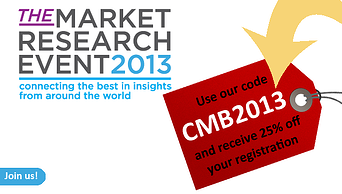 Avis Budget Group’s VP of Customer Insights and Experience, Eric Smuda, sat down with CMB’s Judy Melanson to talk about Customer Experience, suppliers, and his work as a corporate insights executive.
Avis Budget Group’s VP of Customer Insights and Experience, Eric Smuda, sat down with CMB’s Judy Melanson to talk about Customer Experience, suppliers, and his work as a corporate insights executive.
Eric, it’s always fun to listen and learn from you. I’d like to start by asking a broad question: why is managing the customer experience important for Avis?
Managing the experience is critical for us—and critical for the car rental industry as a whole—because it’s the only way we can differentiate ourselves. The products we offer are identical to the products our competitors offer. We don’t have a location advantage because our competitors are immediately next door. There aren’t no-show fees, so customers are free to choose any company. It’s solely customer experience that differentiates us from our competitors and that drives growth.
Tell me a little bit about your job.
My role is to identify customer pain points and to design improvements in our customer experience. My team gathers and shares customer experience measurement data and marries that data with our operational, reservation, and financial data to really understand what, why, when, and where something is happening. This helps ABG define improvement priorities and get executive sponsorship, funding, and resources for those priorities.
How does your team interact with your end-users—both corporate and on-site?
We want to drive macro change at a corporate level and location-specific change at a local level. One of our newer initiatives is the customer experience governance council, which includes all of North America’s senior management as well as key customer touchpoint owners.
My analytics team shares their findings with the council on a monthly basis. That way, the council can prioritize the projects we want to invest in. We then align executive sponsors, resources, and funding with those initiatives. This monthly meeting also gives us the opportunity to report back on progress made on previous initiatives. We’ll share those insights with the marketing organization and communicate any changes we make with the customer base.
As you reflect back on the years that you’ve been at Avis, what are some of the changes you’ve made that have had the greatest impact on the customer experience?
One change that stands out is in rental rate price consistency (RRPC). We learned that when customers made reservations on our website, the site wasn’t accurately taking the daily rate, combining it with any add-ons he/she might have (insurance, car seats, GPS, XM radio, etc.), and then correctly calculating the taxes. So customers weren’t getting an accurate final bill. Now they do with the RRPC project, and we’ve seen a significant decrease in our pricing and billing complaints.
Price and cost are such important considerations in the purchase decision because they can be dissatisfiers, so that’s great.
Absolutely. We now know from our text analytics program that billing complaints are the biggest driver of negative Net Promoter Scores. The RRPC project has been one way we’re reducing those pain points and the number of calls going into our call center, and it’s had a large impact for our customers.
Another thing I’d like to mention is the rollout of the Select & Go experience to our top 50 locations. Some customers want to have the option of selecting another car if they don’t like the one we assign to them. This program was born out of that customer feedback. Customers can now receive a notification on their phone about which spot their assigned car is in, come see the car, and either take the assigned car or go to the Select & Go exchange lot where they can exchange the car for free. We also have an upgrade lot where they can decide whether they’re willing to pay $20 or $25 more to upgrade to another car class. This has been a customer experience improvement, and it’s also actually driven $3 million to $4 million in incremental revenue for the company.
That’s fantastic!
It’s a win for customers and a win for ABG. Another thing we know is that speed of service is of the utmost importance. We get more comments about speed of service in our text analytics engine than we do about anything else, so we’ve been taking a look at the entire rental process. We looked at over 100,000 customer verbatims and broke them down based on where they sit in the rental process or in the customer experience. We identified 20 projects we can complete to impact the customer speed of service at different stages of the rental experience. About half of those projects are active now, and customers should definitely look for significant upgrades over the next year or two in our ability to serve them more quickly.
I love that you’re addressing the customer needs more globally. You’re not making a touchpoint-by-touchpoint improvement, but rather an improvement about the customer’s need for speed across his/her entire engagement and experience.
I think that's the biggest philosophical change we've made over the last couple years as it relates to our customer experience program. Rather than looking at it as location-specific and driving change at the individual level, we’re now evaluating customer experience much more comprehensively. We look at macro issues at a division level that impact customers everywhere, and we start to fund and drive change in those identified areas.
What’s going to be different in customer experience at Avis in the next two years?
We’re working on a flight disruption service, which is relevant given the winter we’ve had in the Northeast. This service proactively reaches out to customers whose flights have been canceled and asks them whether they’d like to keep the car another day, turn it into a one-way rental and just drive home, and more. We want customers to know we can get them home or wherever they need to be.
Great! Let’s move a little bit more into research, tell me: what insights get you most excited?
Our program is constantly evolving as we bring in new brands and continue to evaluate our business. CMB was with us at the beginning of this journey, and you guys know that our customer experience program started with roughly 150 to 200 of our top airports.
We’ve also expanded it globally through our partners EMEA and Asia Pacific. The bigger growth challenge for us from a learning standpoint is adding the relationship view of the customer to the evaluations of the transactions they have with us. That will let us know not only how we did in Phoenix yesterday, but also how we’re doing across all of the interactions customers have with our various brands. So all of this growth we’re making in our customer experience measurement program is absolutely something I’m excited about.
As far as things that excite me, it’s really when we can dive down and understand specific customer pain points that affect specific types of customers in specific types of situations. For example, we know customer satisfaction is lower for certain types of trips vs. others, so when we can start to dig and combine that knowledge with other information like pricing strategies, billing strategies, and other policies, you start to understand why. Then, we can begin to have conversations with business decision makers and explain to them what things are getting in the way of the customer experience so they can reconsider and change those practices and policies. My passion is always trying to make things easier and better for customers, so what’s most exciting for me is the possibility of accomplishing that through those conversations.
You’re the customer advocate. There might be pricing or revenue objectives, but you can speak for groups of customers, which needs to be done in order to build engagement with the brand.
That’s always the big challenge: trying to balance customer needs against revenue and profit goals.
What would you tell market research vendors about how they can best support the decisions you need to make?
What an age old question! I feel like the supplier side has always struggled with understanding our business at a level at which they can help us drive business decisions and not just simply provide information. We want suppliers to provide context, combine the findings and the context with our financial drivers, and use all of that to help us make a more informed business decision. That’s a true partnership. That’s where I’ve had the most challenges with suppliers in the past. It’s also why I value working with your CMB team.
Can you talk a little bit about your relationship and partnership with CMB?
You understand our business as well as our management’s priorities. We have a great, trusted relationship—your guidance, partnership, and advice have been wonderful. You’ve transcended from being a vendor to being a very key advisor and trusted partner.
Got a market research question that you're just dying to have answered? Ask our Chief Methodologist, and he might tackle your question in his next blog!

 merchandise. And it’s easy to see why. In addition to driving incremental revenue, ancillary products and services enable a supplier to (1) offer a competitive base price - essential (particularly in some segments like cruising) to enter into a traveler’s consideration set; and (2) meet the needs of their guests by merchandising – and conveniently delivering – what customers crave and where they’re willing to spend extra.
merchandise. And it’s easy to see why. In addition to driving incremental revenue, ancillary products and services enable a supplier to (1) offer a competitive base price - essential (particularly in some segments like cruising) to enter into a traveler’s consideration set; and (2) meet the needs of their guests by merchandising – and conveniently delivering – what customers crave and where they’re willing to spend extra.


 Avis Budget Group’s VP of Customer Insights and Experience, Eric Smuda, sat down with CMB’s Judy Melanson to talk about Customer Experience, suppliers, and his work as a corporate insights executive.
Avis Budget Group’s VP of Customer Insights and Experience, Eric Smuda, sat down with CMB’s Judy Melanson to talk about Customer Experience, suppliers, and his work as a corporate insights executive. 

 Recently, the US Supreme Court heard an
Recently, the US Supreme Court heard an  In early July, shoppers at Shaw’s, Albertsons, Acme, Jewel-Osco and Star were greeted at the door and asked to hand in their store loyalty cards. These chains, recently acquired by Cerberus Capital Management LP, all shut down their loyalty programs, focusing instead on everyday low prices and storewide sales.The move left some industry analysts scratching their heads, questioning why the brands would kill off decades old programs with millions of members. They pointed to the vast quantities of information that can be harnessed improve merchandising and marketing, and to customize products and messages. They hypothesized that the stores hadn’t invested in the data mining activities needed to extract insights. Perhaps…
In early July, shoppers at Shaw’s, Albertsons, Acme, Jewel-Osco and Star were greeted at the door and asked to hand in their store loyalty cards. These chains, recently acquired by Cerberus Capital Management LP, all shut down their loyalty programs, focusing instead on everyday low prices and storewide sales.The move left some industry analysts scratching their heads, questioning why the brands would kill off decades old programs with millions of members. They pointed to the vast quantities of information that can be harnessed improve merchandising and marketing, and to customize products and messages. They hypothesized that the stores hadn’t invested in the data mining activities needed to extract insights. Perhaps…